In this tactical analysis, we dive into the strategies employed by Francesco Farioli at Ajax, a club renowned for its rich footballing tradition and commitment to developing young talent. Farioli, known for his innovative approach and emphasis on possession-based play, brings a fresh perspective to Ajax’s tactical setup. This article explores how his philosophy shapes the team’s dynamics on the field, from their build-up play to defensive organization. The former assistant of Roberto De Zerbi has created a playing style highly influenced by his old mentor while incorporating his own unique ideas. Join us as we break down the key elements of Farioli’s tactics and how they influence Ajax’s performance.
Build-up
Low Build-up
In the low build-up, Farioli sets his team up in a 1-4-3-3 formation with a back four, one number-six, two number-eights, and a front three.
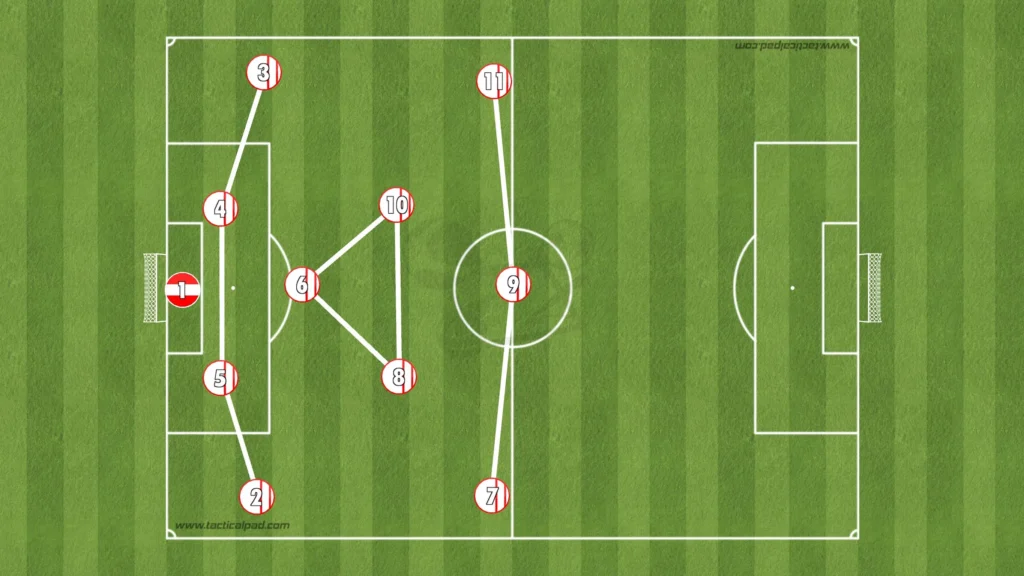
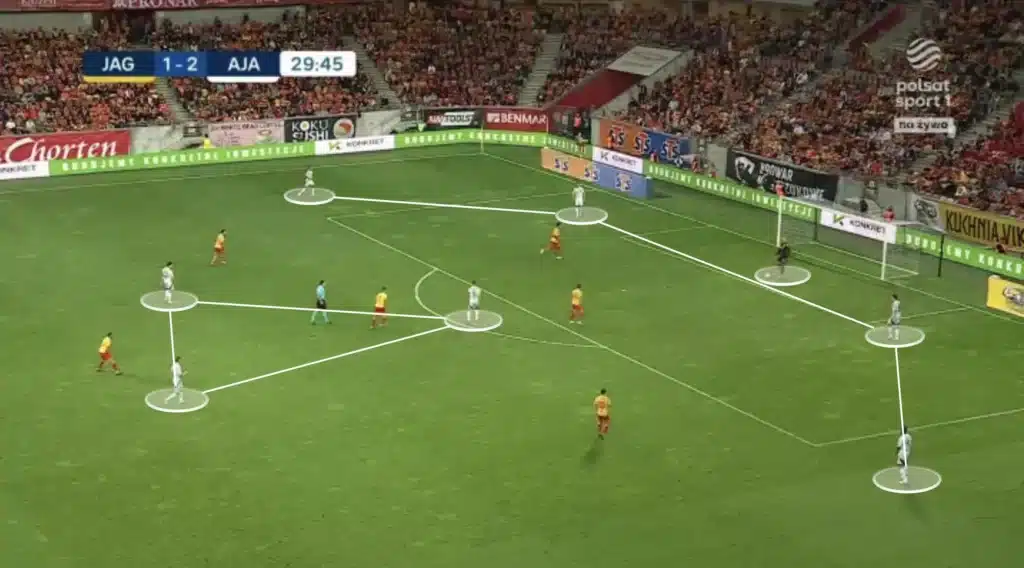
They often drop with the number eights and like using the goalkeeper, which creates numerical superiorities, allowing them to beat the press.
High Build-up
In the high build-up, the Ajax fullbacks invert into the midfield. They will come into the midfield next to the number-six, with the wingers staying as wingers and the number-eights pushing up as the attacking midfielders.
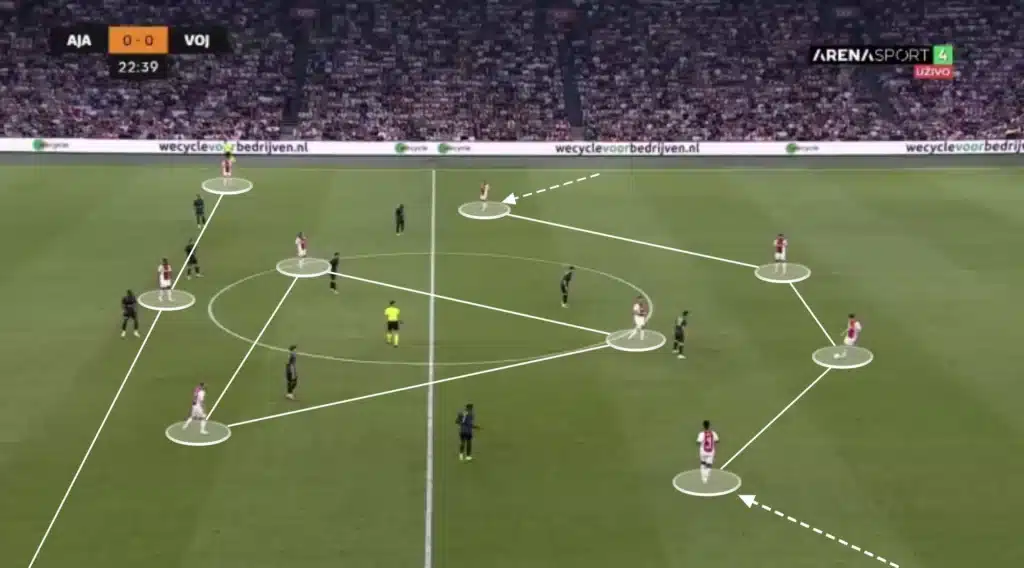
This creates a 1-2-3-2-3 structure:
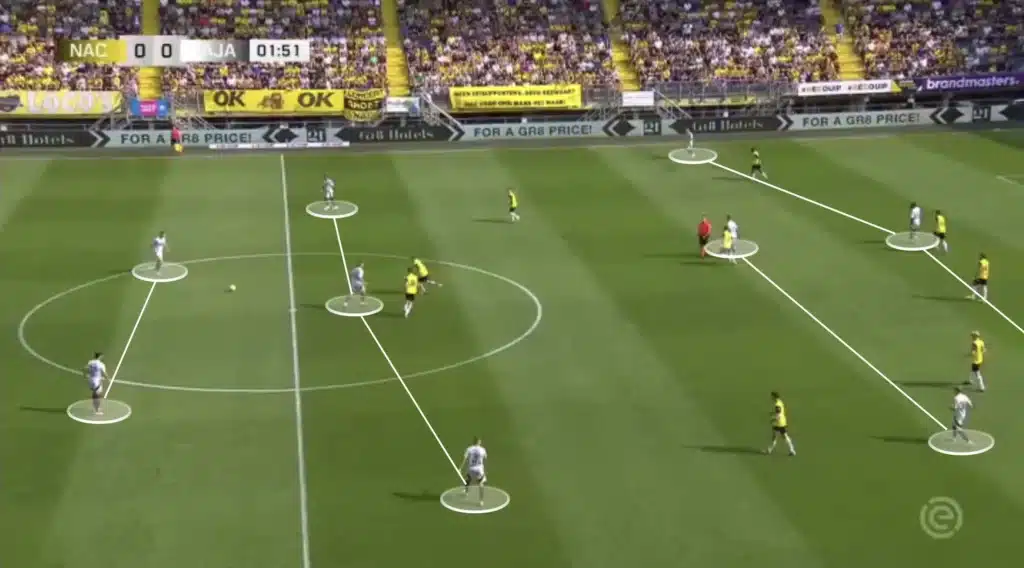
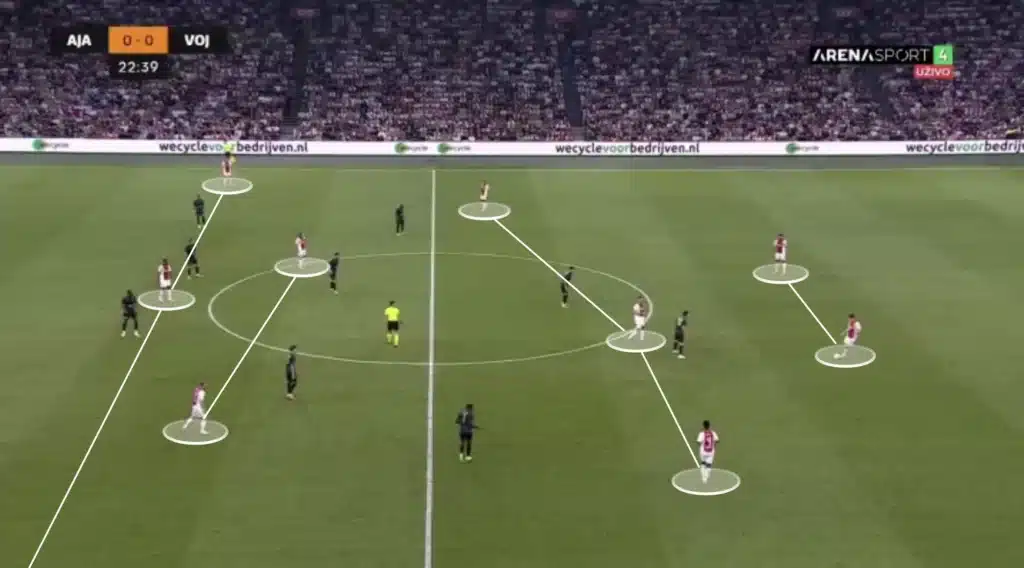
The 1-2-3-2-3/1-2-3-5 formation allows for a strong presence in the midfield, which helps in controlling the game and dictating the tempo. The two central defenders provide a solid foundation for recycling possession, while the three holding midfielders can effectively link play between defense and attack. The five forward players, including wingers and strikers, stretch the opposition’s defense, creating space and overloads in key areas.
Additionally, when the fullbacks invert, the opposition wingers usually follow to cover the run, which opens the passing lane from the center-back to the winger. The center-back can play the ball to the winger, who can attack the opposition fullback and combine with the number-eight to create a 2v1 situation.
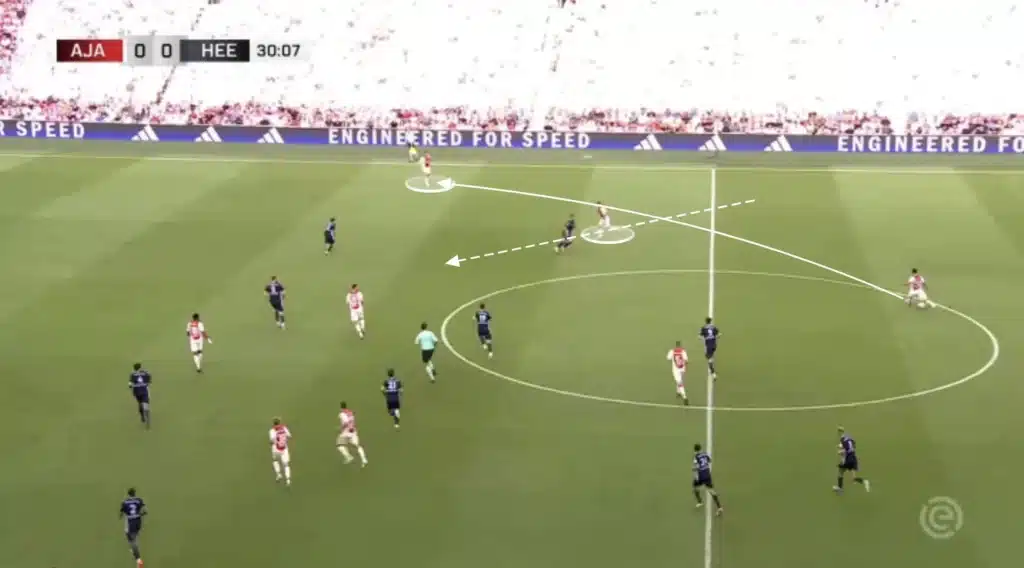
Numerical Advantage in the midfield
Having only two players out wide and the rest in the middle creates more options in the center and less space between the players. Farioli likes this because he prioritizes playing through the middle. He needs one player out wide to pull the opposition apart while the rest create numerical advantages in the midfield areas. When a team outnumbers the opposition in the midfield, it can more easily retain the ball, exploit spaces, and progress the ball through the center. This advantage forces the opposing team to chase the game, which can lead to defensive errors and create opportunities for breaking down their defense.
Another purpose for keeping many players in the middle is to shorten the distance between them. This shortens the length of the passes, which naturally shortens the time between passes. This means the opposition players will have less time to push up and press, giving the Ajax players more time and control.
Rest-Defence
Farioli also wants many players close to the center to create a good rest-defence structure. Rest-defence in the 1-2-3-5 formation is crucial for maintaining balance and preventing counterattacks when the team is in possession. Having many players in the middle builds good conditions in defensive transitions, allowing more players to counterpress when losing the ball. The two center-backs, the inverted fullbacks, and the number-six form the core of the rest-defence, as they are well-positioned to deal with any potential loss of the ball. When losing possession, the four or five Ajax players closest will immediately jump on the opposition player with the ball and close the distance to cut off any passing lanes. This approach disrupts the opponent’s transition from defense to attack, forcing errors and creating opportunities to regain control of the ball.
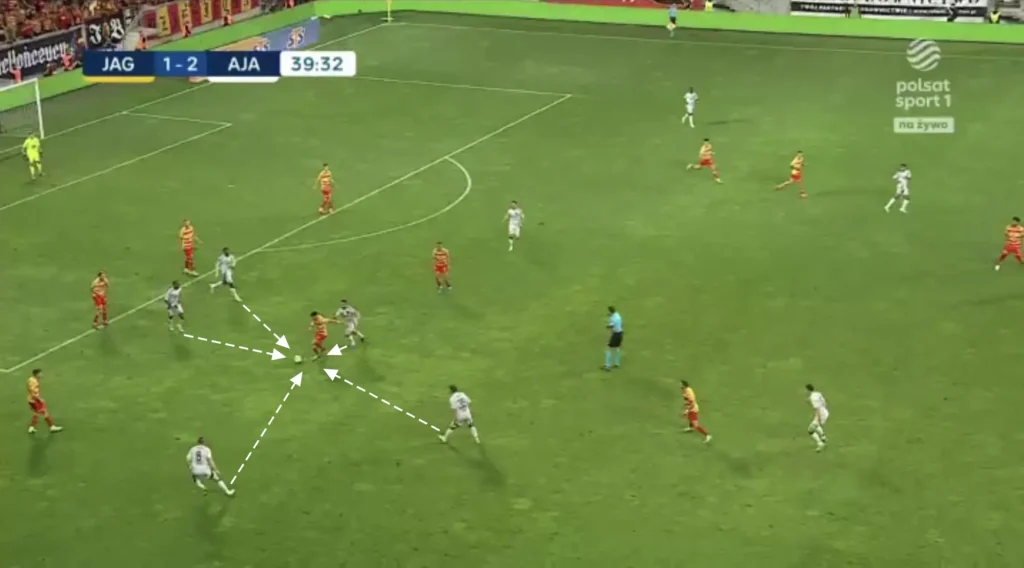
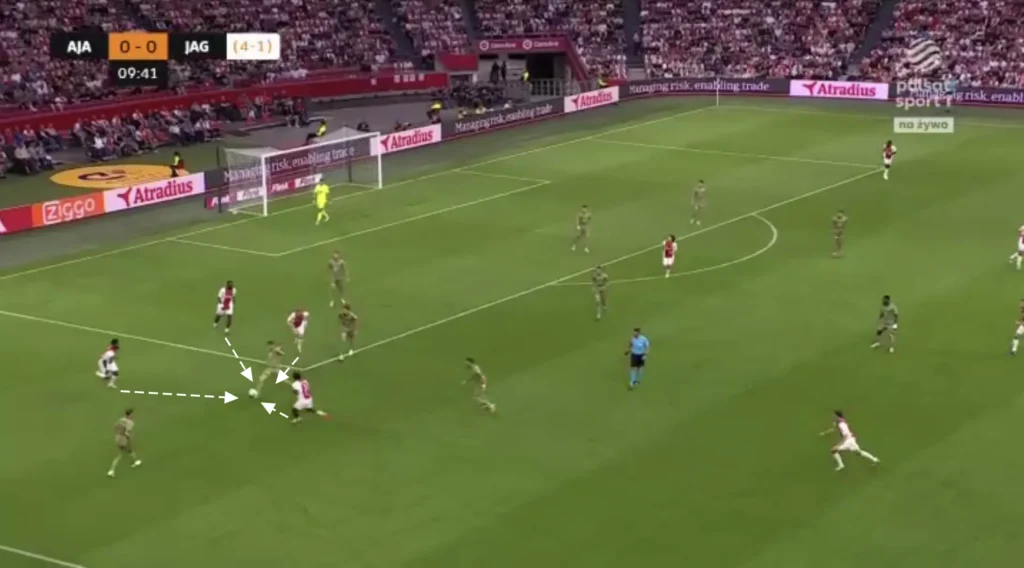
Counterpressing like this keeps Ajax on the front foot, allowing them to dominate possession and create more scoring opportunities.
High Backline
Another massive aspect of Farioli’s high possession build-up is to have the defenders high up. This helps in the counterpress because they get closer to the center. Having more players close to the center who can win the ball back makes it difficult for the opposition to do anything when they win possession. Furthermore, the high backline shortens the distance between players, shortening the time and length of the passes and preventing the opposition from pushing up their defense.
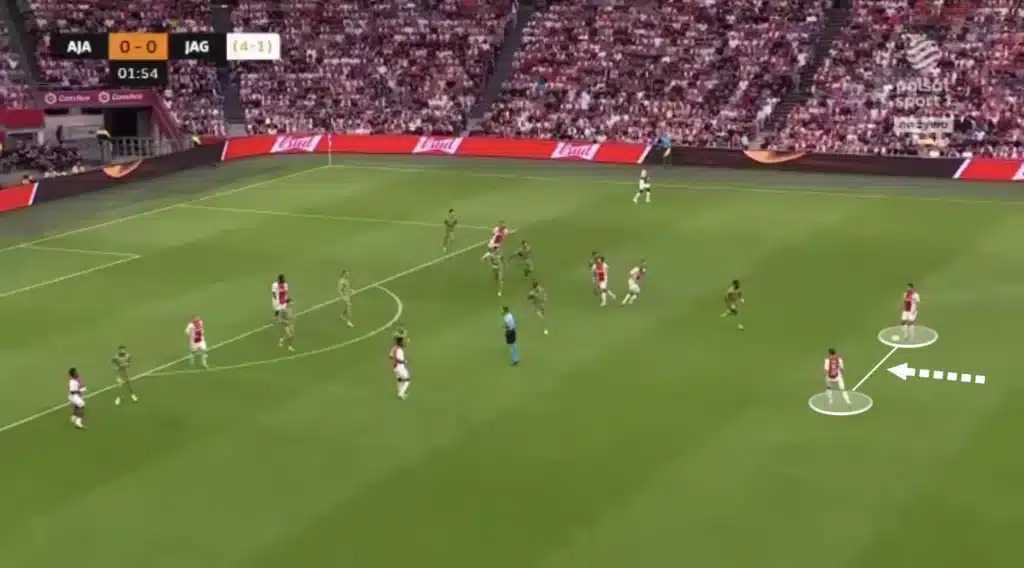
Third-man
Farioli wants his team to play through the opposition when possible. One vital tool that they often use is the third-man principle. The third-man principle is a tactical concept used to create and exploit space by involving a third player in a passing sequence.
It typically works by having Player A pass the ball to Player B, who then quickly relays it to the free Player C. An opponent will block the pass from Player A to Player C, but the pass from Player B to Player C will be open, which is why he is needed in this passing combination.
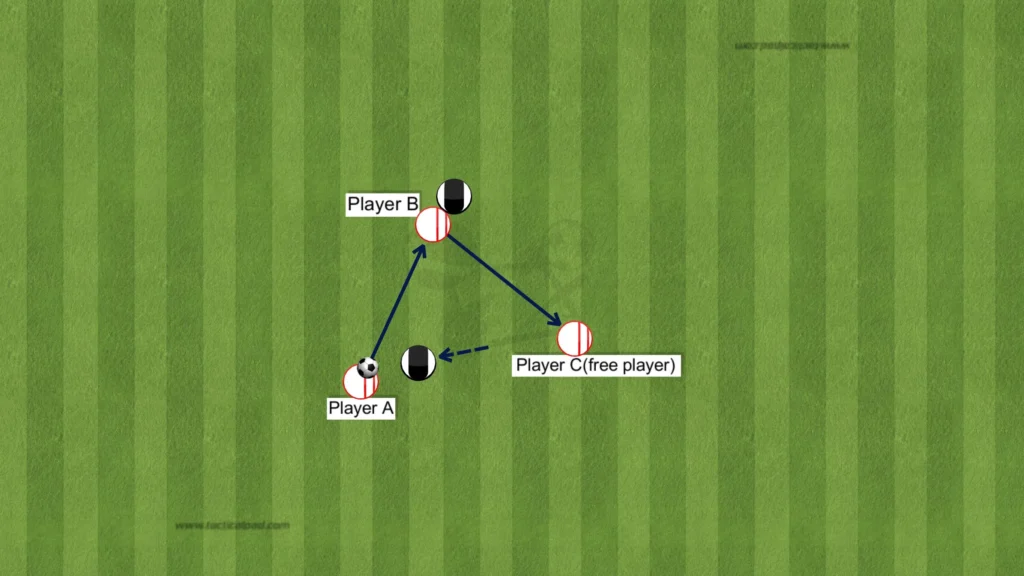
This movement often bypasses an opponent’s pressing line and opens up space, allowing the team to advance the ball more effectively. The key to the third-man principle is timing and positioning, as the third player must anticipate the play, position themselves advantageously, and receive the ball in a manner that breaks the opposition’s defensive structure. This principle is integral to many modern football strategies, promoting fluidity, quick decision-making, and dynamic attacking play.
Ajax will, for example, use third-man combinations to find an open center-back when the opposition striker presses the goalkeeper.
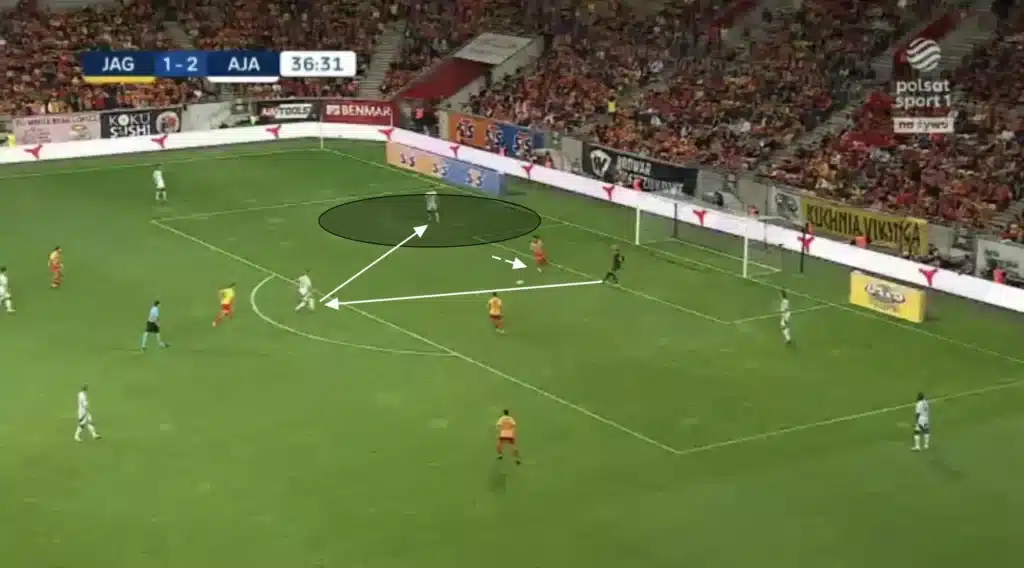
If the opposition’s number-ten breaks out and presses the center-back, a third-man combination involving the attacking midfielder could be used to find the free number-six.
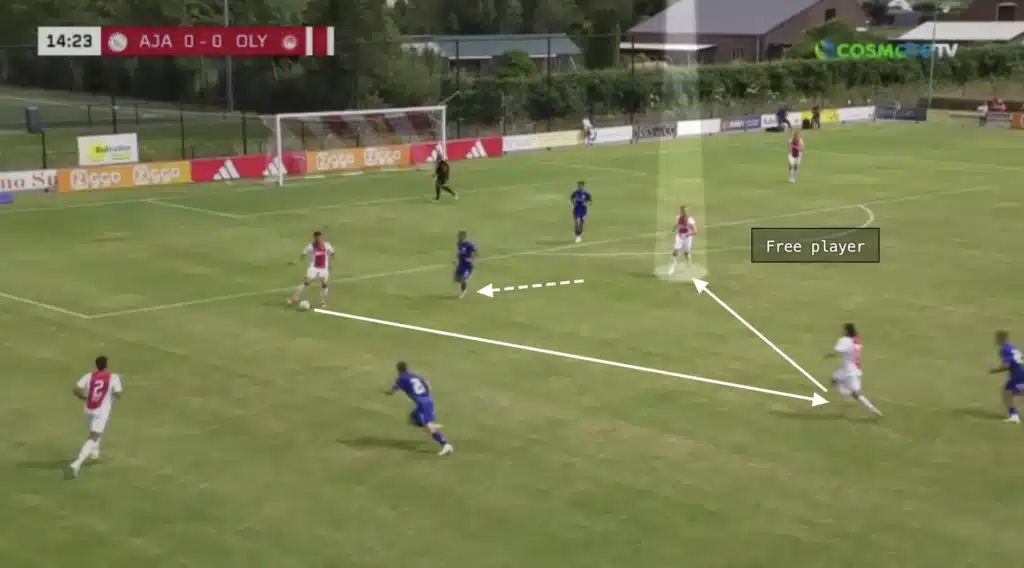
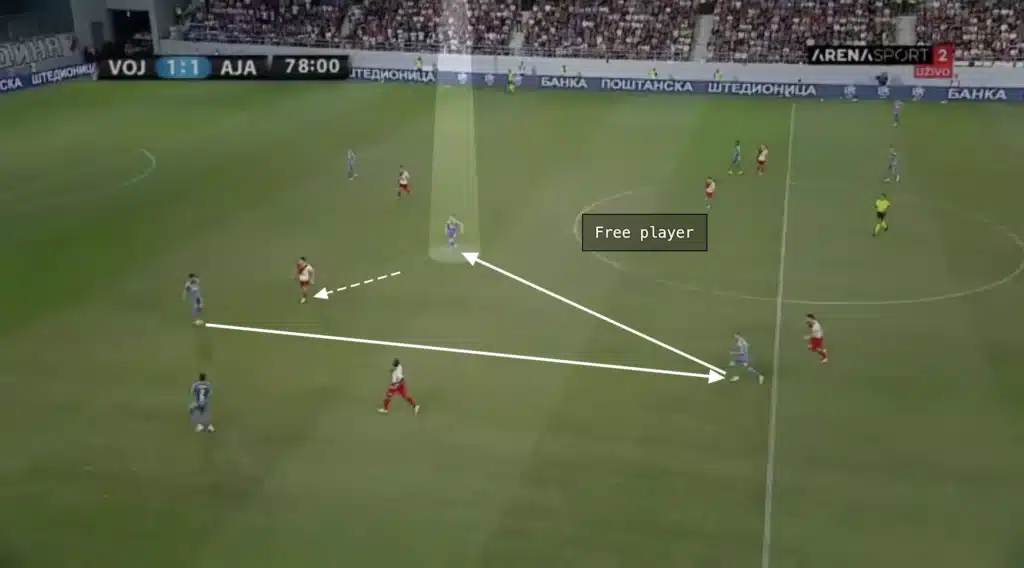
They also use third-man combinations further up the pitch to find the attacking midfielders in the pockets. A center-back will play the ball to the striker or a winger, who can use a one-touch pass to find the attacking midfielder in the space between the opposition’s defense and midfield.
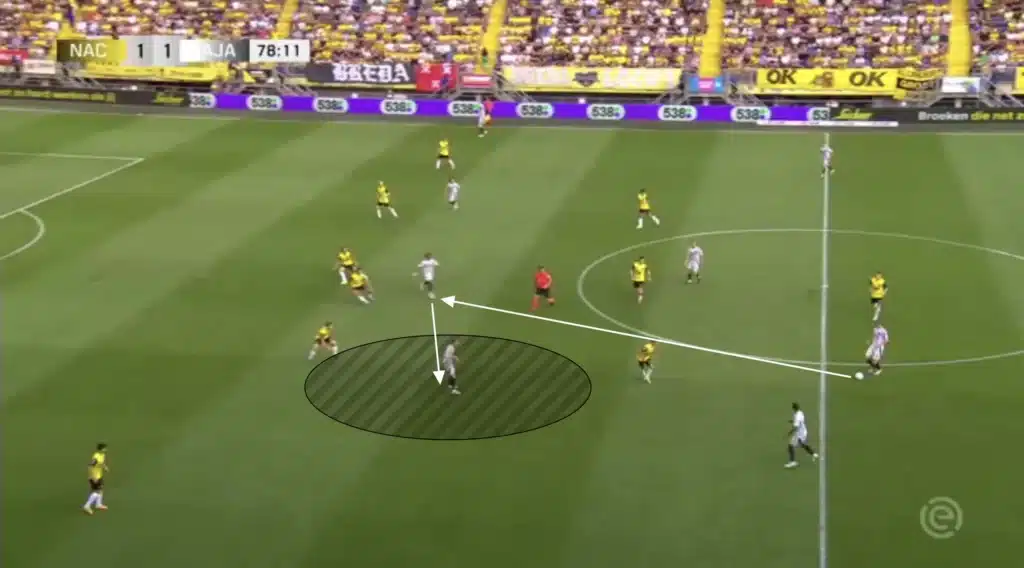
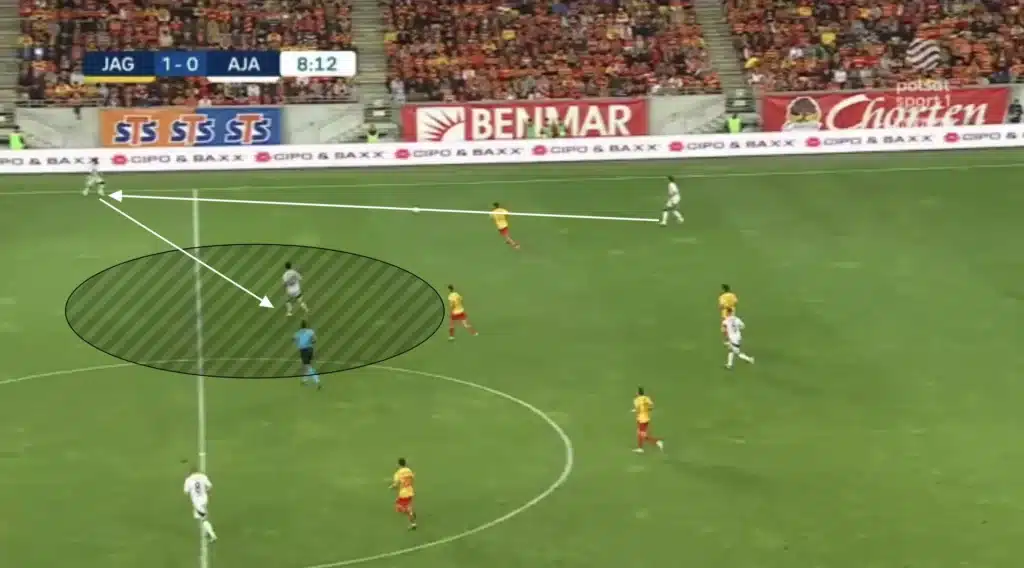
Numerical Advantage Against the Opposition Backline
Another aspect of Ajax’s high build-up is their ability to create numerical advantages against the opposition’s defensive line. The front five naturally becomes numerically superior against a back four, which they are great at taking advantage of.
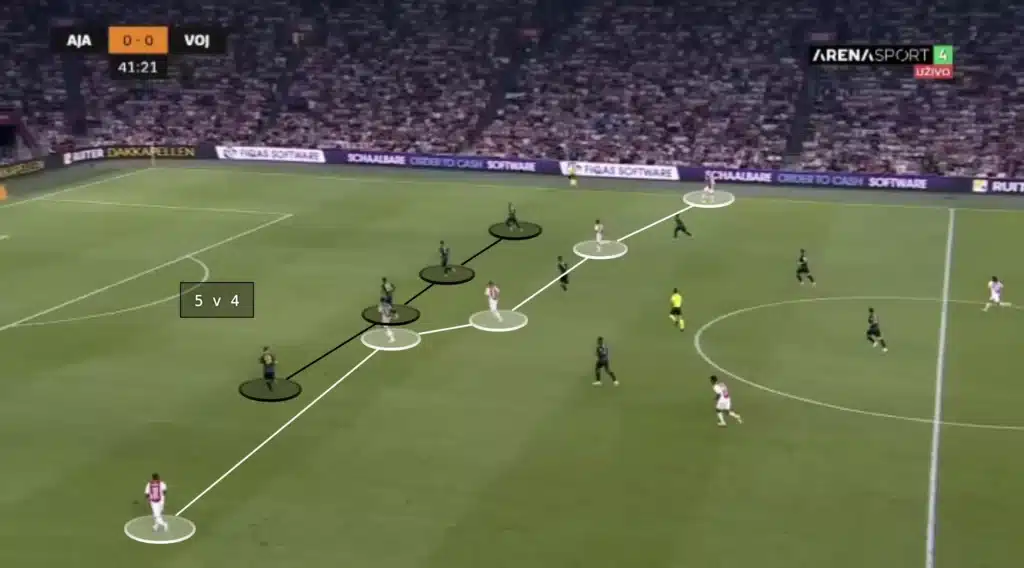
They mainly exploit this by creating 2v1 situations against the opposition fullback. When the defending team is positioned on one side, the weak-side fullback becomes vulnerable to the long switch of play due to the 1v2 against Ajax’s winger and attacking midfielder. The attacking midfielder will make a run in behind, the fullback will follow that run, and the space for the winger out wide will be opened. Farioli’s team often capitalizes on this by getting the ball to the winger and creating many opportunities from 2v1 situations on the wing and in the half-spaces.
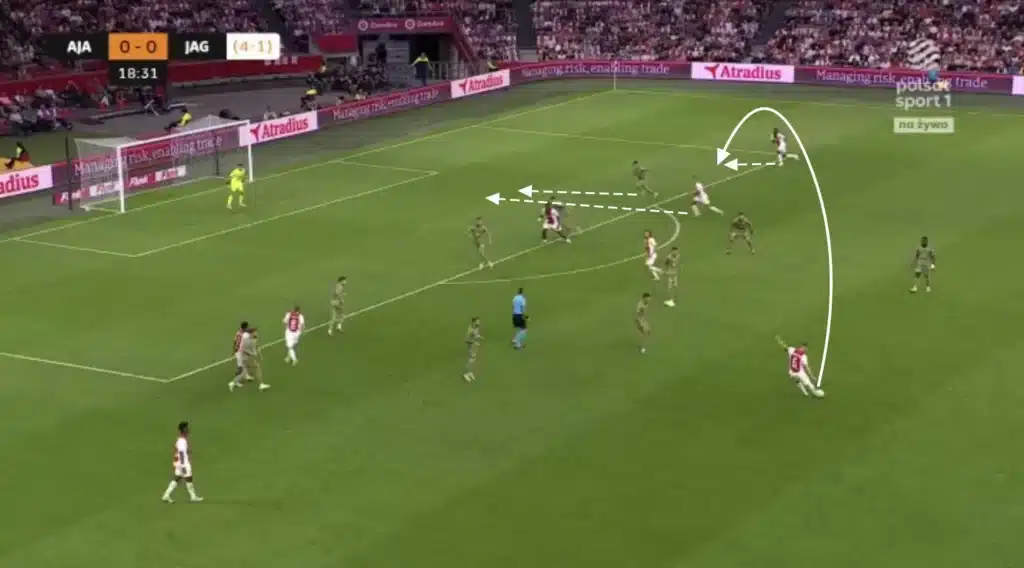
Final Third
Attacking the Half-Space
Farioli’s players usually look to create chances by attacking the space between the opposition center-back and fullback. They primarily do this from the wide areas with underlaps from the attacking midfielders. When the winger receives the ball out wide he will attract the opposition fullback. This opens the space between the fullback and the center-back, which allows the Ajax attacking midfielder to make the underlapping run into this space. The ball can be played to the underlapping player, who can cross the ball into the box or attack his defender in a 1v1 situation.
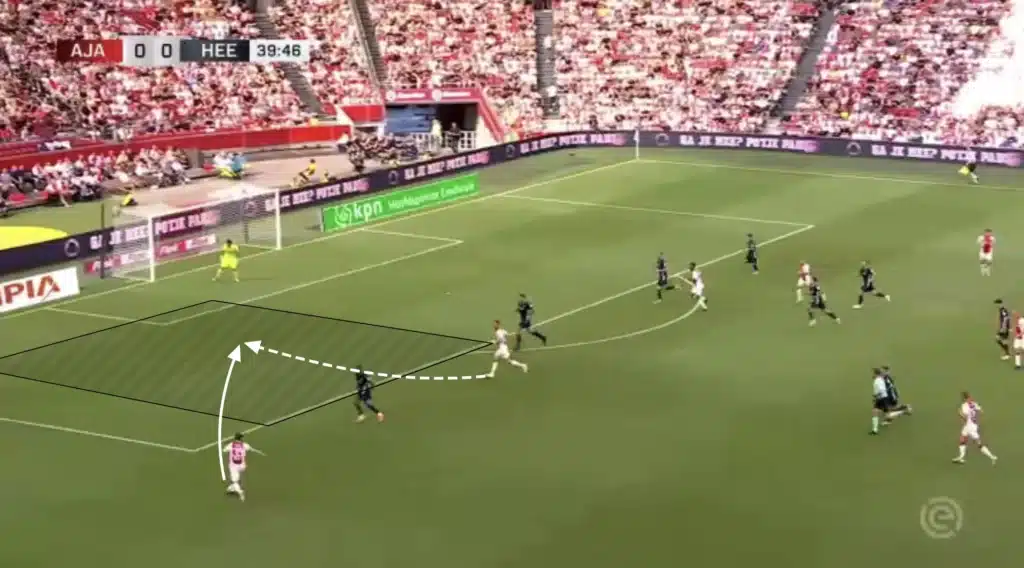
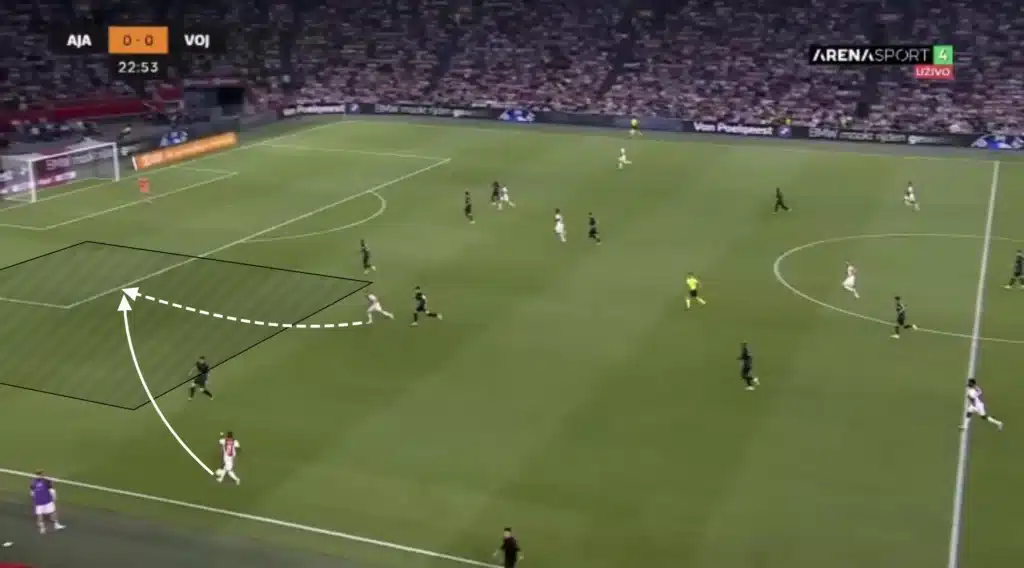
The winger does not have to play the ball to the underlapping player. The run from the attacking midfielder will often drag away an opposition defensive midfielder, which opens the space inside. The winger can take the ball inside and shoot or find a pass to a free player in front of the backline.
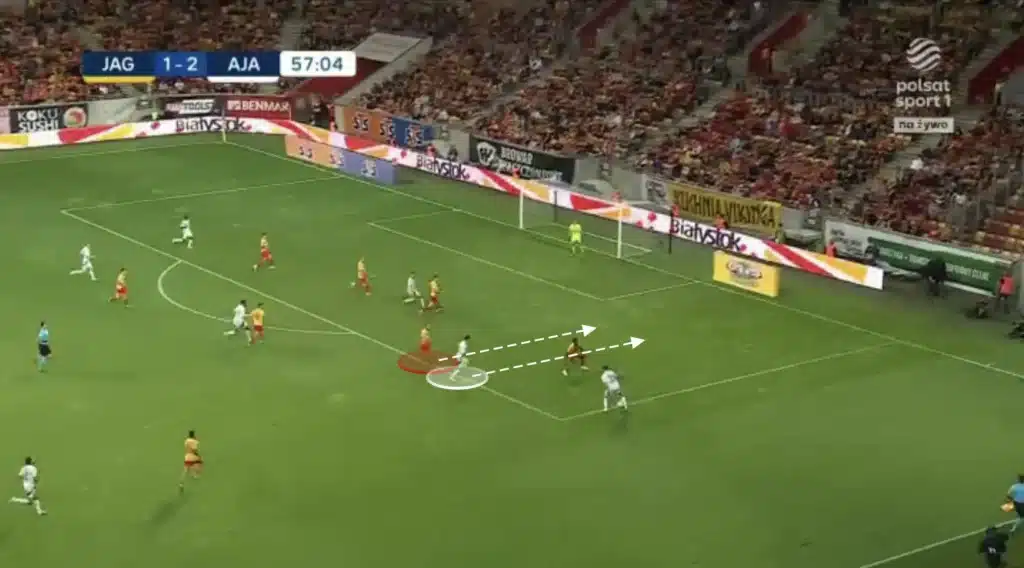
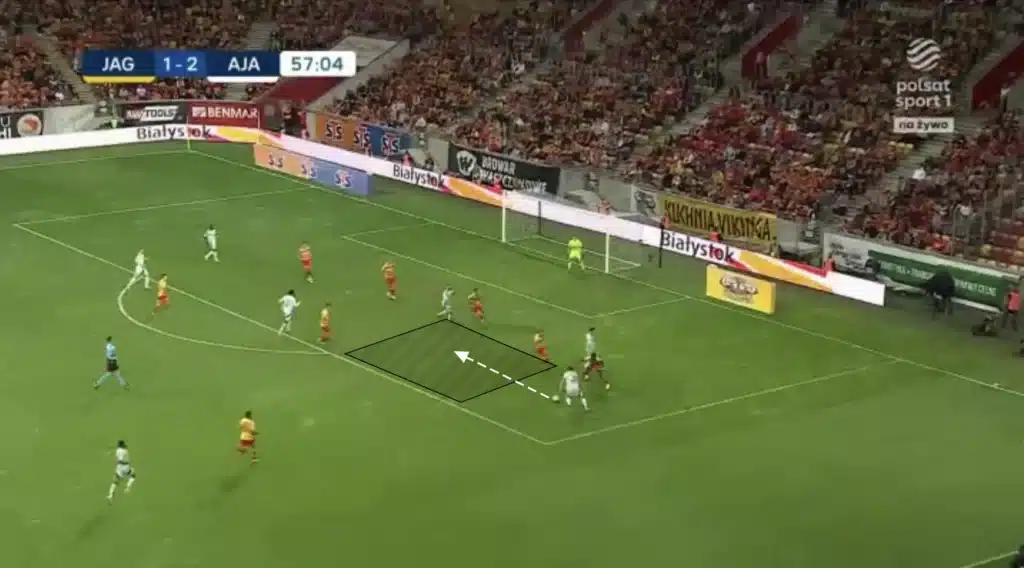
Overlaps
Ajax will also use overlaps to produce opportunities in the final third. When the winger gets the ball and the inverted fullback is nearby, the fullback can make the overlapping run, creating a 2v1 against the opposition fullback.
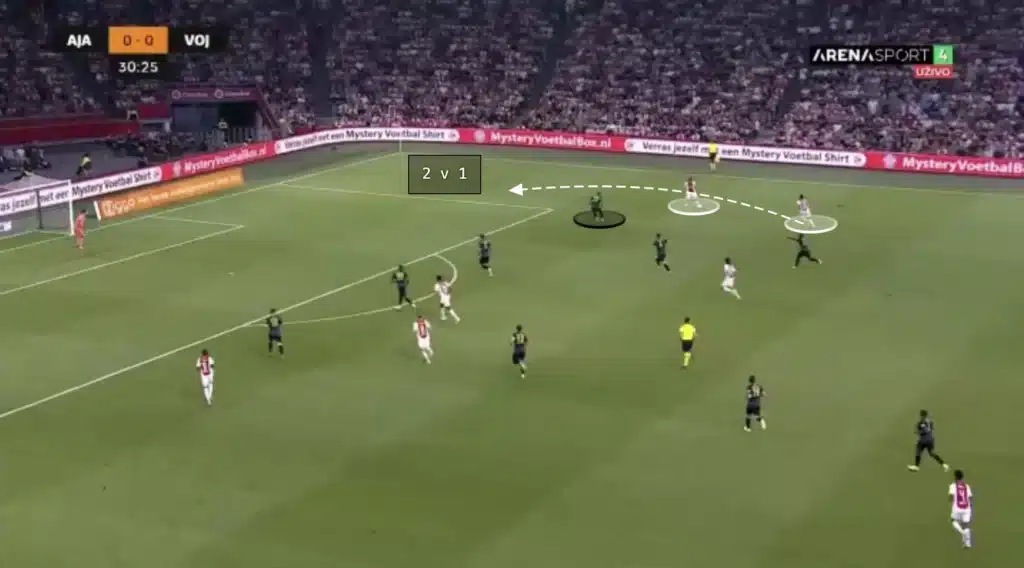
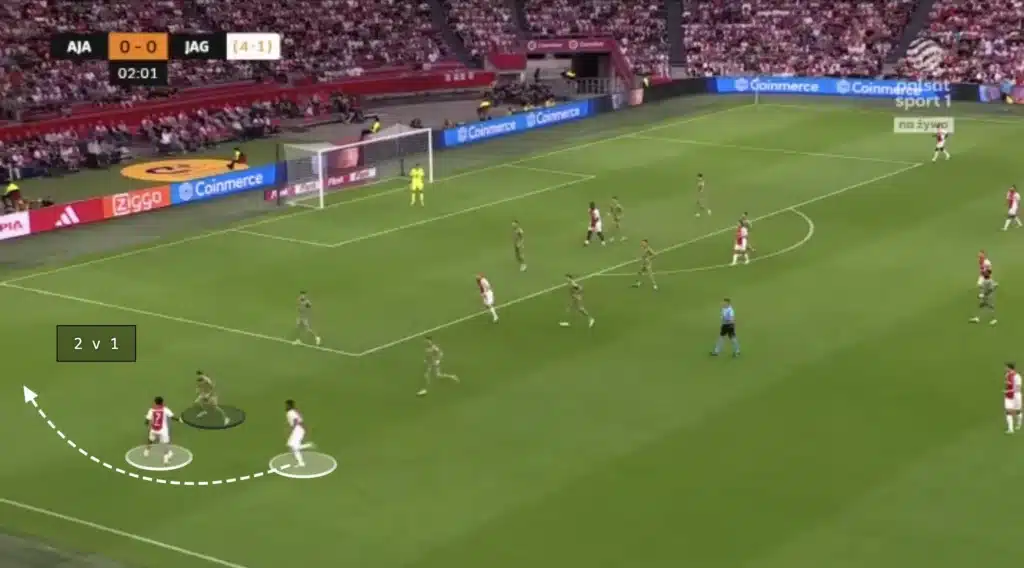
If the opposition fullback drops to cover the overlapping run, the winger could cut inside, taking a shot or combining with a midfielder. If the fullback covers the center, the ball can easily be played to the overlapping player, creating a crossing opportunity.
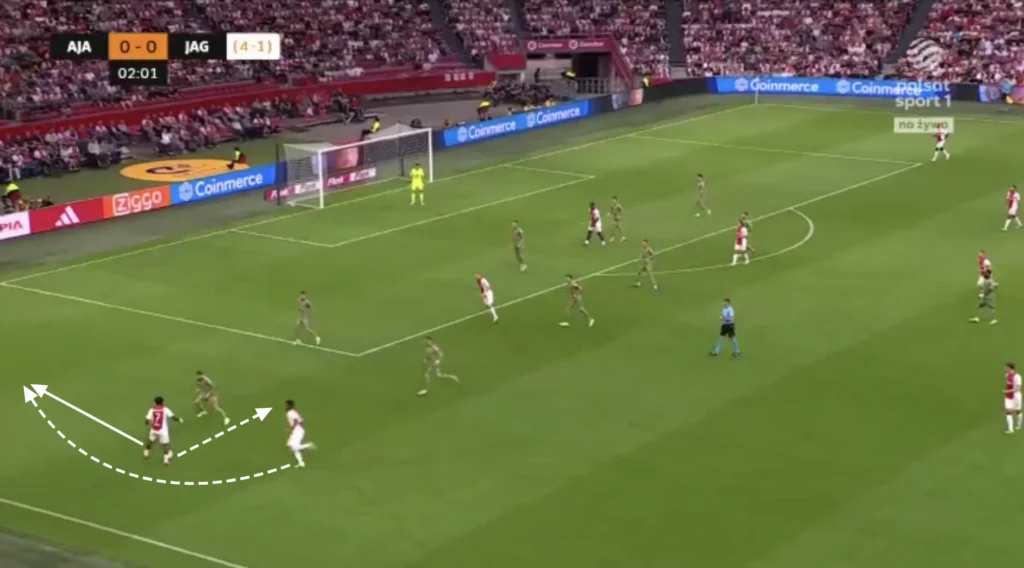
Many Players in the Box
The attacking midfielders and wingers look to make runs into the box when the ball is in the final third, often getting four or five players into these areas to create overloads. The numerical advantages in the box increase the chances of connecting with the cross, as more players present multiple targets for the crosser, making it harder for defenders to mark everyone effectively. Additionally, having multiple players in the box provides options for different types of finishes, whether it’s a header, volley, or a quick tap-in. It also allows for better positioning to react to second balls or rebounds, increasing the likelihood of capitalizing on any defensive errors.
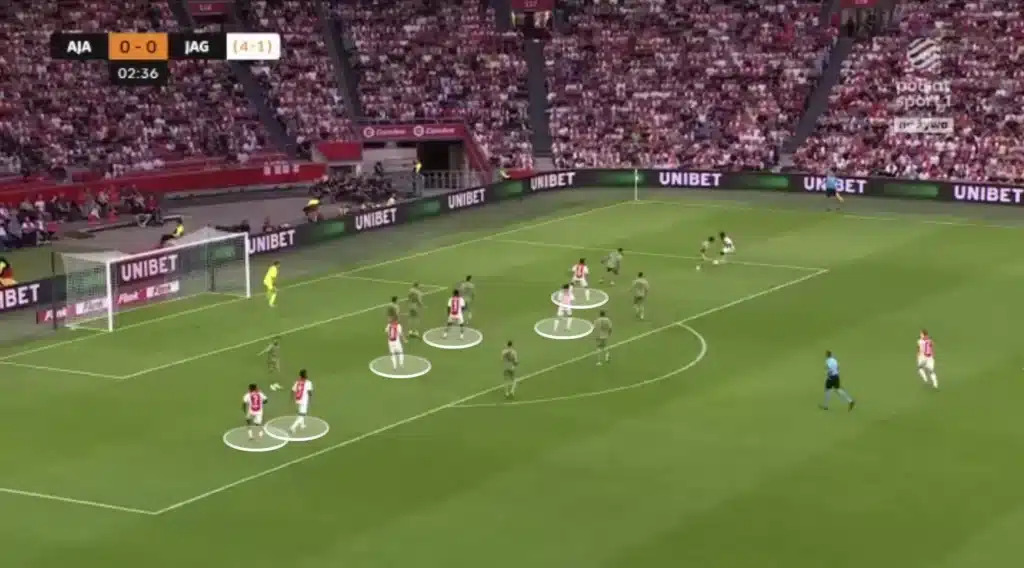
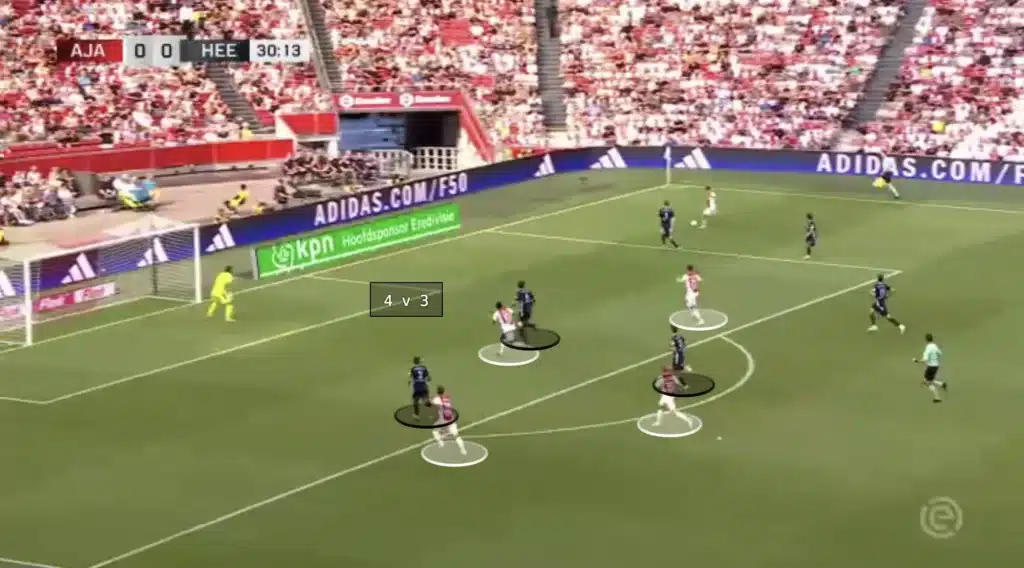
Defending
High Press
Farioli places much value on being aggressive without the ball. This shows in Ajax’s high pressure. Farioli usually wants his team to go man-to-man and intensely press the opposition. Each player is assigned a direct opponent to mark tightly, ensuring no easy passing options are available. This intense pressure forces the opposing team into hurried decisions, often resulting in turnovers in dangerous areas. Ajax almost use their high press as an attacking threat, scoring many goals from winning the ball high up the pitch.
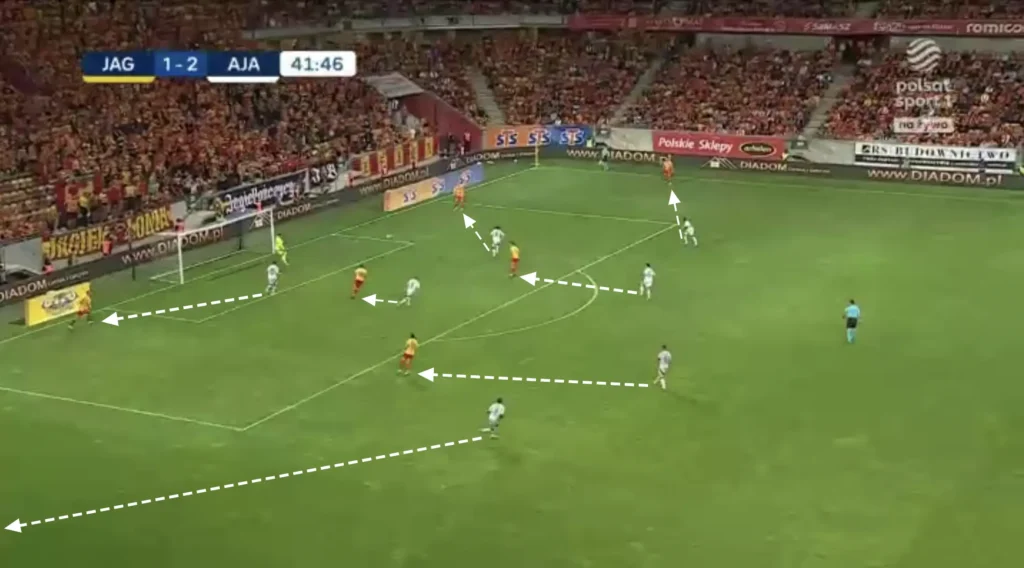
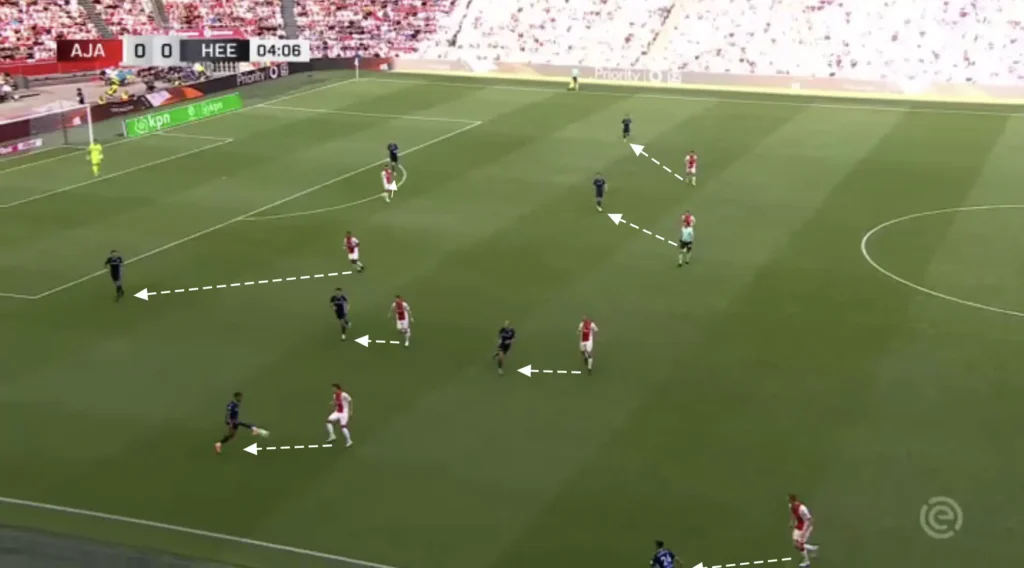
In a man-to-man system, it becomes crucial that the players know when to mark the opponent they are responsible for and when not to. If an opponent, for example, is very far from the ball, the Ajax player marking him does not need to be as close to him. He can instead come in and help create numerical superiorities in the center, decreasing the risk of dangerous 1v1 situations. The Ajax players will always have an opposition player they are responsible for, however, they will never be closer to them than they need to be.
Here, the Ajax midfielders see that the opposition center-back is playing a long ball, making the opposition players close to the center-back irrelevant. They drop back instead, which puts them in a better position to win the second-ball.
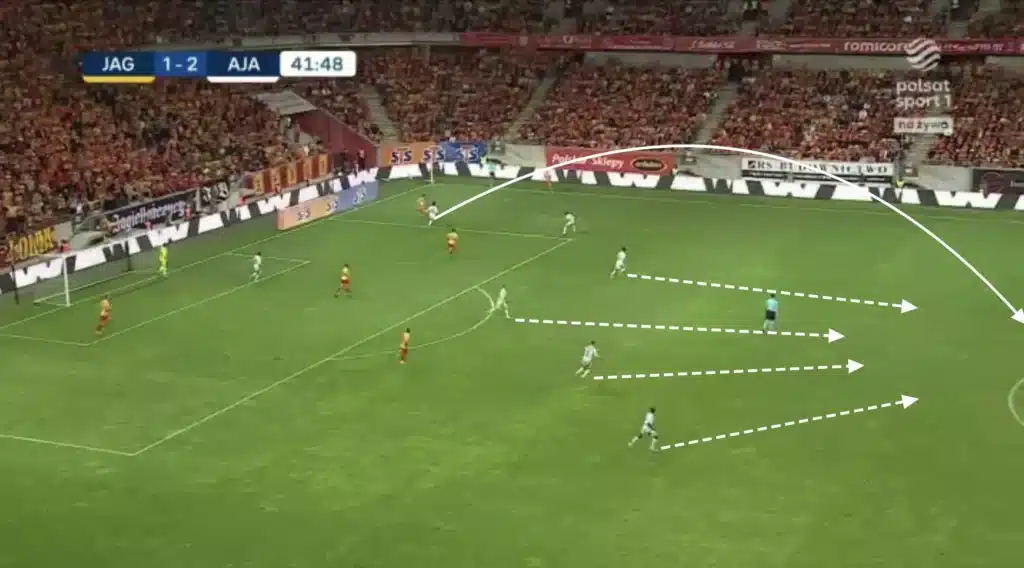
This results in Ajax having a 7v2 numerical advantage around the first duel when the long ball comes, giving them good chances to win the second-ball.
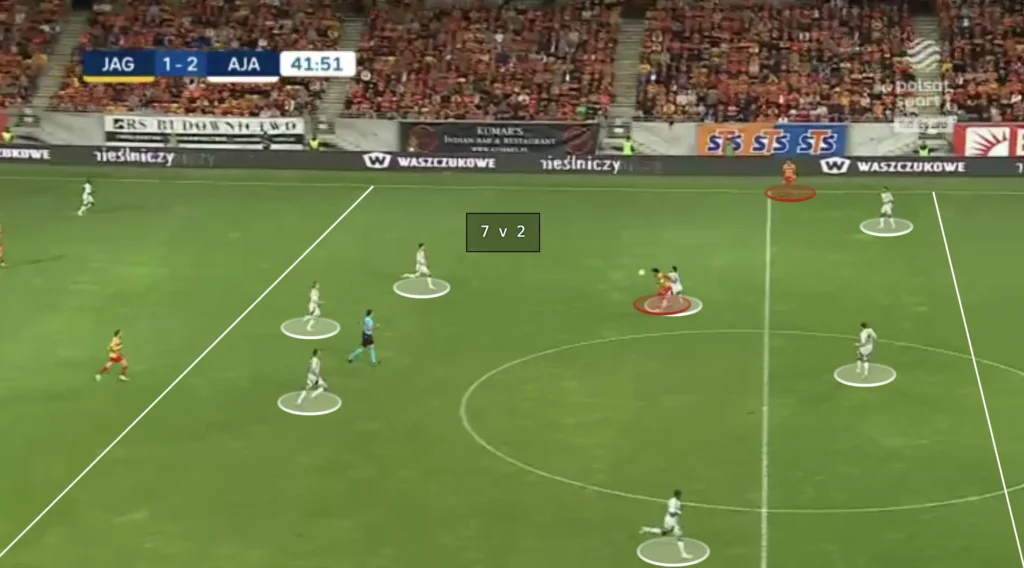
Low Press
Farioli’s Ajax uses a 1-5-4-1 formation in the low press. They look to set up in a low-block, always trying to close the center and force the opposition out wide. Farioli wants his team to stay compact without dropping too low, preferably closing the space between the midfield and backline.
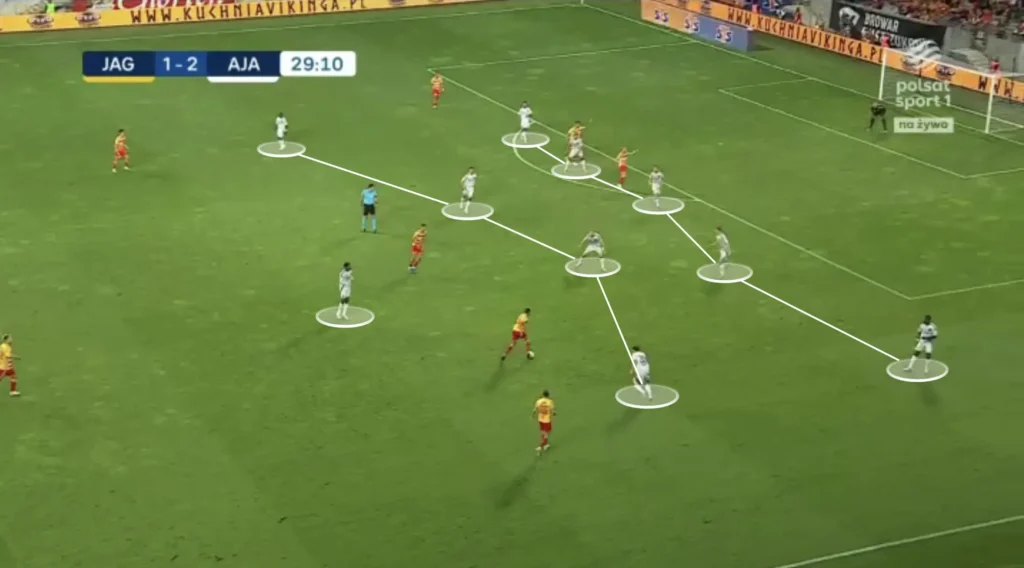
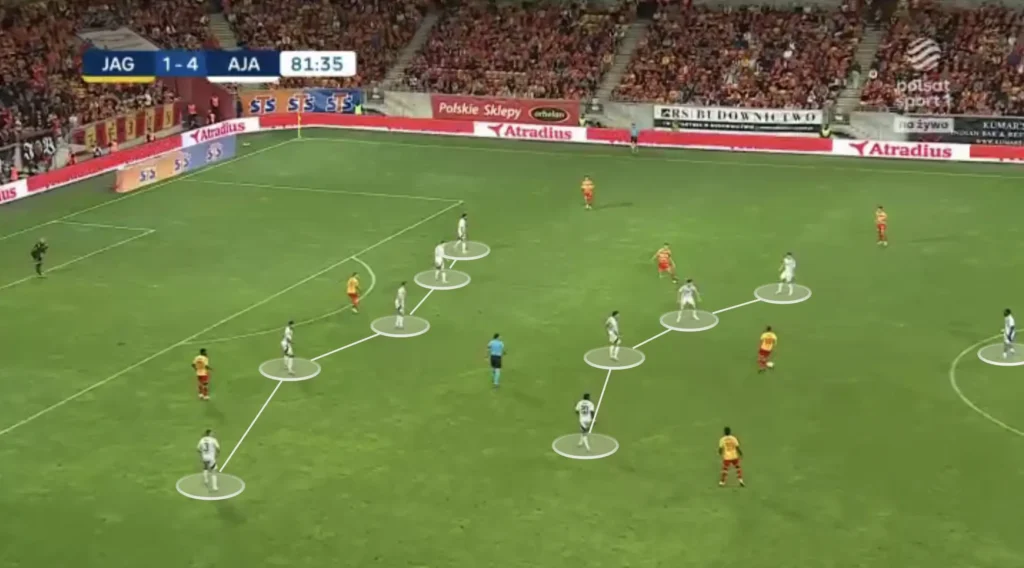
Defending in a 1-5-4-1 formation emphasizes solidity and compactness, making it particularly effective against teams that rely on wide play or quick transitions. The five defenders, including three center-backs and two wing-backs, create a strong defensive line that can absorb pressure and cover the width of the pitch. The four midfielders in front of the backline provide an additional layer of protection, often pressing the ball and cutting off passing lanes, while also helping to maintain the team’s shape. The lone striker remains higher up the field and usually tries to push the opposition to one side. This formation aims to limit the opposition’s space, forcing them to take risks or attempt crosses, which can be more easily defended with the numbers in the box.
Aggressive Center-backs
A notable aspect of Ajax’s low-block is their aggressive wide center-backs. The wide center-backs are never afraid to push up on an opposition midfielder to stop them from turning and driving with the ball.
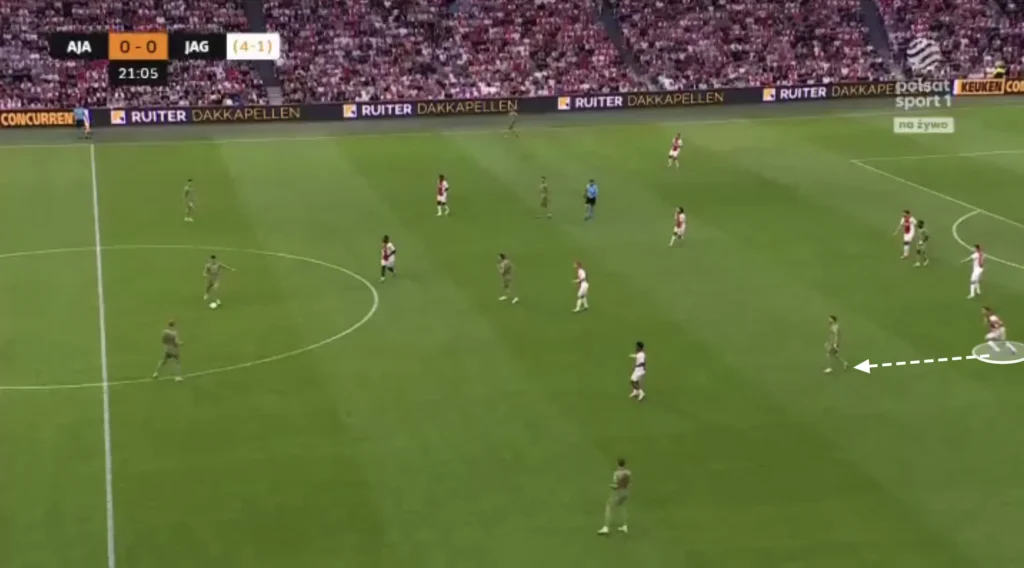
This forces the opposition back while giving the Ajax midfielders and attackers more freedom to push up and press when defending. The problem with pushing up a center-back is that big spaces get created between the defenders. Farioli’s players are, however, great at solving this. The backline will quickly become a compact back four, with the defenders coming across to close the space that the pushing center-back opened.
Transition From Low-Block to High Press
Farioli always wants his team to squeeze the pitch when defending. This means constantly pushing the team up as much as possible. Every time the opponent plays a slow, sideways pass or a back pass, Ajax’s first line of pressure pushes up, with the rest of the team following to stay compact. When the next pass comes, they push up even more, forcing the opponent back even more. They do this because it pushes the opponent further away from the Ajax goal, making it harder to create chances.
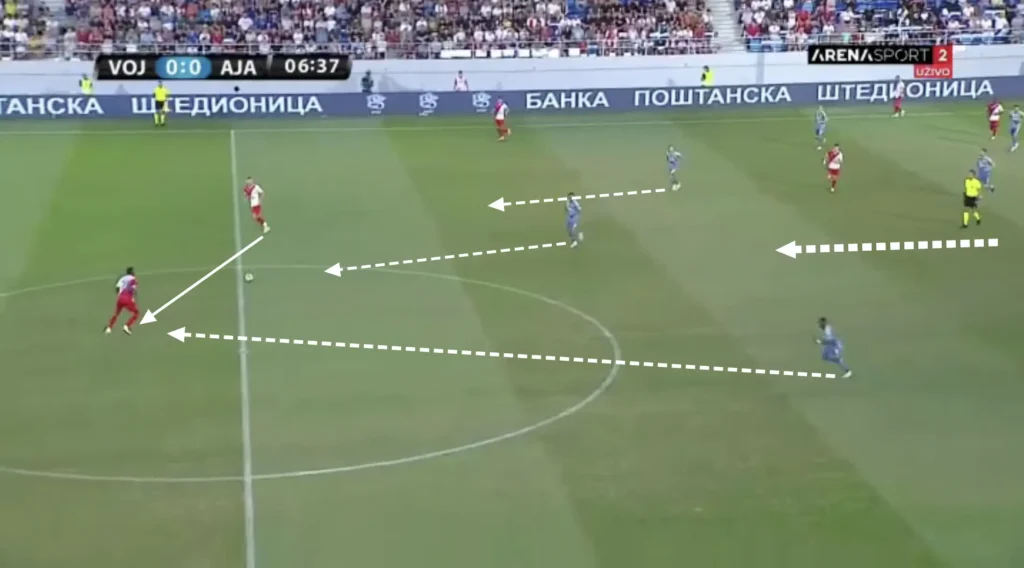
When the Ajax players successfully push the opposition down deep into their own half, they can transition to the high man-to-man press again. The key to a successful transition lies in timing, coordination, and the ability to read the game, ensuring that the team can catch the opponent off guard and regain possession high up the pitch.
In this situation, the opposition uses a 1-4-4-2 formation. To get into the man-to-man system, the left-winger will push up on the opposition’s right center-back, forcing the left-wingback to push up on the opposition’s right-back. The rest of the players will naturally find an opposition player to mark.
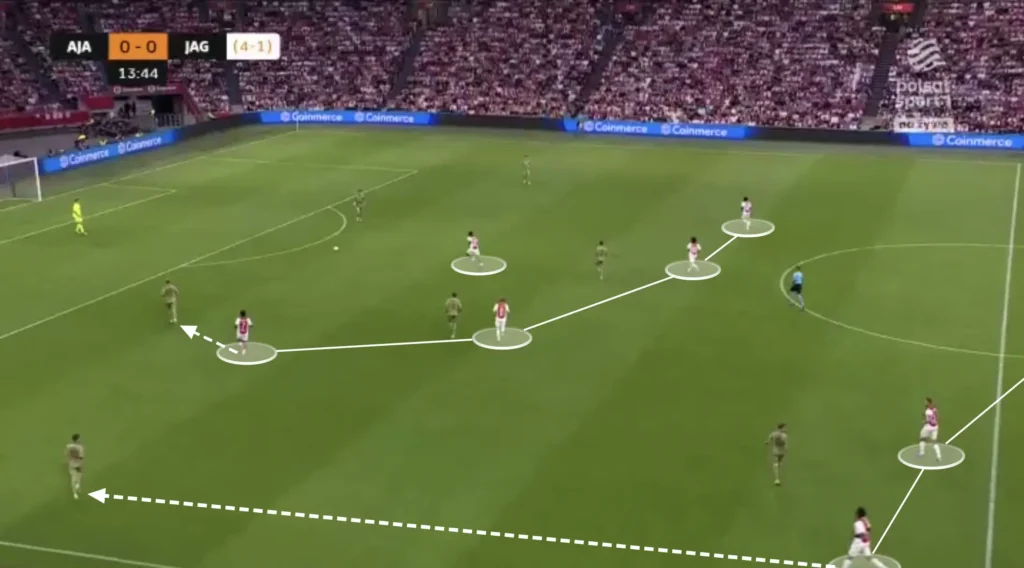
Final Thoughts
In conclusion, Francesco Farioli’s approach at Ajax highlights his modern tactical philosophy, blending creativity with disciplined structure. His emphasis on fluid, possession-based play and high pressing demonstrates a commitment to both attacking flair and defensive solidity. Under Farioli’s guidance, Ajax is not only maintaining its tradition of attractive football but also adapting to the demands of the contemporary game. As this tactical analysis shows, Farioli’s strategies are helping Ajax evolve, making them a team to watch as they continue to develop under his innovative leadership.
